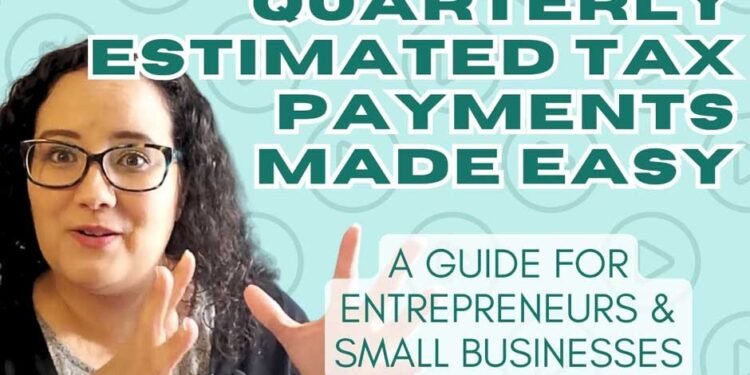When you step into entrepreneurship, one of the biggest shifts you’ll face is how taxes work. Instead of watching them come out of every paycheck like a W-2 employee, you’re now responsible for sending money to the IRS four times a year. These quarterly estimated tax payments are not optional, and failing to pay them correctly can mean penalties, interest, or a frighteningly large bill in April.
It’s a system designed to keep you current, but it can feel confusing if you’ve never dealt with it before. The good news is that once you understand how quarterly taxes work, you’ll feel much more in control of your business finances.
Here are five things you need to know to stay on top of them.
Taxes Don’t Happen Once a Year
One of the first things you’ll notice when you become self-employed is that tax day doesn’t just come around on April 15. The IRS expects you to pay four times each year, in April, June, September, and January. These dates cover different parts of the year, so missing even one throws off the system.
It’s worth circling them on your calendar or setting reminders so they don’t sneak up on you. A single missed deadline can generate penalties and create stress that could have been avoided with better planning.
You’re Estimating, Not Paying Exact Numbers
The word “estimated” is important here. You’re essentially guessing at your total tax bill for the year and paying it in chunks. If your income is steady, this is relatively straightforward. But when revenue goes up and down — as it often does for entrepreneurs — the calculation takes a little more care.
The IRS gives you two safe harbor options to keep from being penalized. You can pay at least 90 percent of what you’ll owe for the current year, or pay 100 percent of last year’s tax liability (110 percent if you earned more than $150,000). Sticking to one of these guidelines ensures you won’t get hit with underpayment penalties, even if your projections aren’t perfect.
It Covers More Than Just Business Profits
When you’re making quarterly payments, you’re not only reporting what your business brings in. The IRS expects you to include all forms of taxable income, not just what shows up on your profit and loss statement. That means you need to account for:
- Net business income after expenses
- Freelance or consulting work on the side
- Investment earnings, including dividends, interest, and capital gains
- Rental property income
- Money from side hustles or other gigs
Leaving any of this out can create problems later. Quarterly taxes work best when you take a complete view of your financial picture rather than focusing only on your main source of income.
The Mistakes Add Up Quickly
Entrepreneurs often stumble here, and the errors are surprisingly common. Some of the biggest pitfalls include:
- Failing to set aside money throughout the year, then scrambling to make payments.
- Mixing personal and business accounts, which makes tracking expenses and income messy.
- Forgetting about self-employment tax, which adds more than 15 percent on top of your income tax.
- Guessing at payment amounts instead of calculating them properly
Each mistake may seem small, but combined, they create penalties, late fees, and unnecessary stress. Having a system in place — whether it’s dedicated software, a bookkeeper, or a personal routine — helps you avoid these traps.
Professional Guidance Is Worth Every Penny
Even if you’re good with numbers, tax rules for entrepreneurs are complicated and constantly changing. Trying to do it all yourself can be risky, especially if you’re juggling business growth at the same time. This is where working with a financial professional, such as a financial planner or tax advisor, becomes extremely valuable.
They can walk you through calculations, help you structure payments around your cash flow, and identify deductions you may not even know exist. More importantly, they can create a tax strategy that fits into your overall business plan rather than treating taxes as an afterthought.
Think of it this way: The cost of professional advice often pays for itself through penalties avoided, stress reduced, and money saved. In the long run, you’ll gain peace of mind knowing your quarterly payments are accurate and your finances are on solid ground.
Putting It All Together
Quarterly estimated taxes are one of those things you might dread at first, but they become manageable once you understand the system. Instead of a nasty surprise every April, you’ll know exactly where you stand. You’ll also protect your cash flow, keep the IRS off your back, and give yourself the freedom to focus on growing your business.
Think of quarterly taxes not as a burden but as one more way of staying disciplined as an entrepreneur. With the right habits in place, they’ll stop feeling like a headache and start feeling like just another part of running a successful business.












